Unlike how it might look, the concept is simple. You should be able to do this trick if you can do two simple things, "Pop and keep your back foot close to the ground" and "Flip the board with your back foot." In this article, we will analyze the physics of the board's movement and how to use the back foot, which is key to the trick.
Summary
Spin the board around the Local Y-Axis
There are two types of axis in this world: The Global Axis and the Local Axis. While board's ascent is along the Global Z-Axis, the board's shove-it rotation in this trick is around the local Z-Axis and the flip is around the local Y-Axis. Understanding the difference between the global and local axis will help you flip the board more efficiently.
Lower the upper body to lift the back toe
As you lower your upper body in the air, your body tries to maintain its inertia and raises the other side of the body = the toes. Use this concept to efficiently lift the back foot.
STEPS of the trick
Before we get into the complicated physics, let's take a quick look at the flow of the trick.
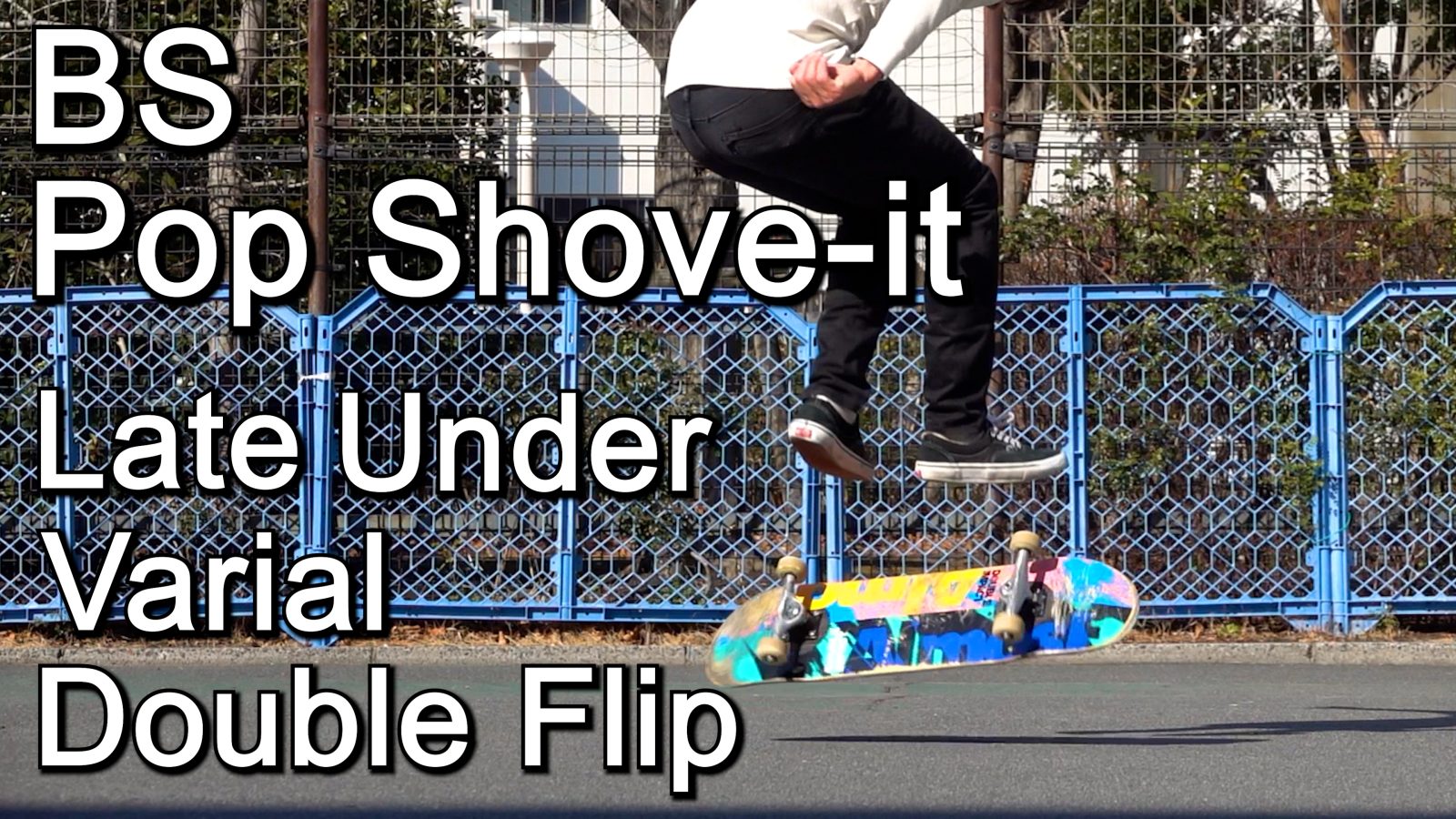
Foot placement
The back foot is placed in the pocket on the toe side of the tail like in a Treflip, and the front foot is behind the bolts like in a Kickflip.
You can place your feet however you want, but placing your front foot closed helps you close your body, too, making it easier to flip your board by simply lifting your back foot forward.
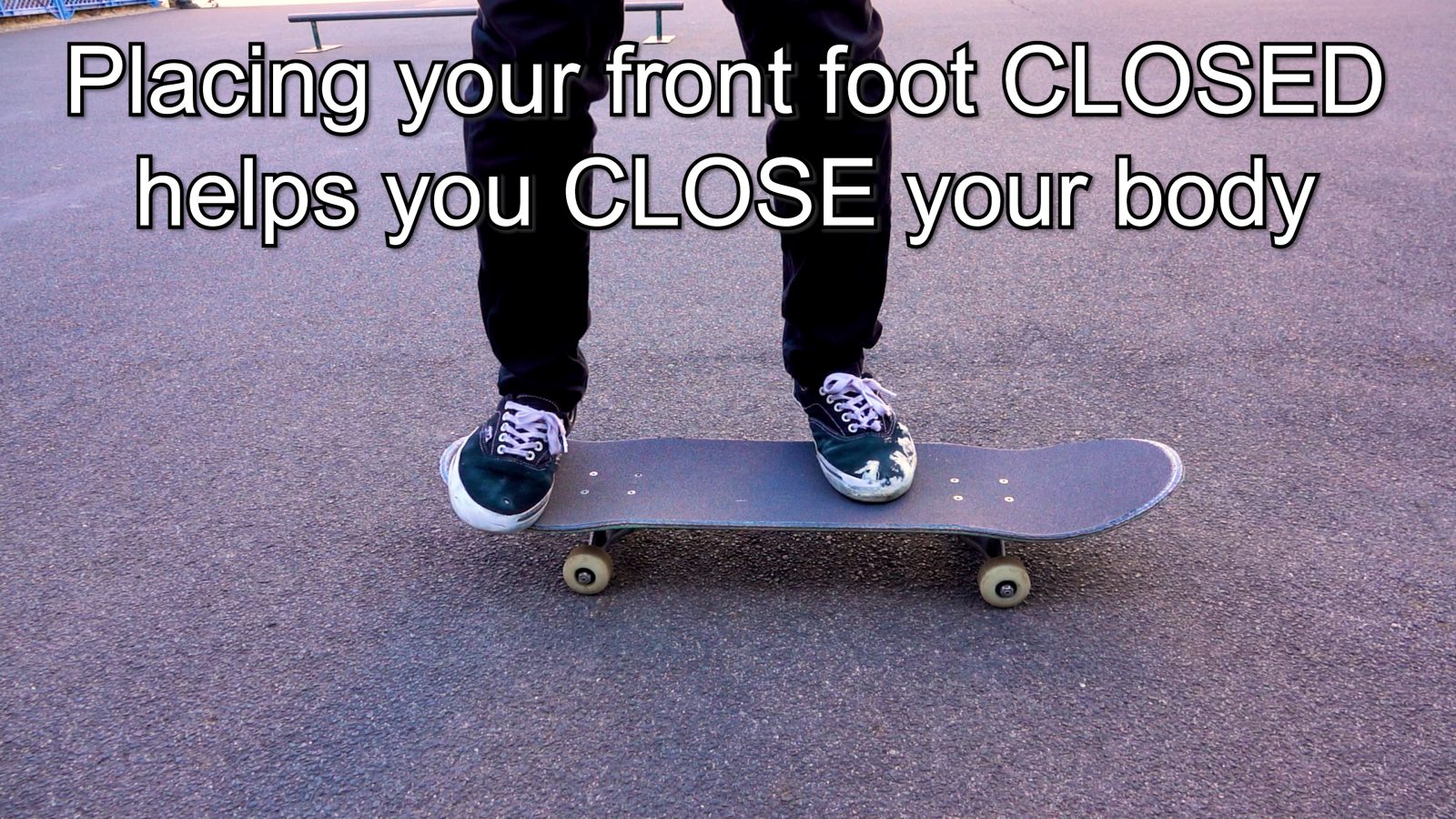
Flow until flicking the board
Keep your back foot low after popping the tail, and lift it when the nose comes around halfway and gets close to it. The board flips when you manage to flick it with your back toe.
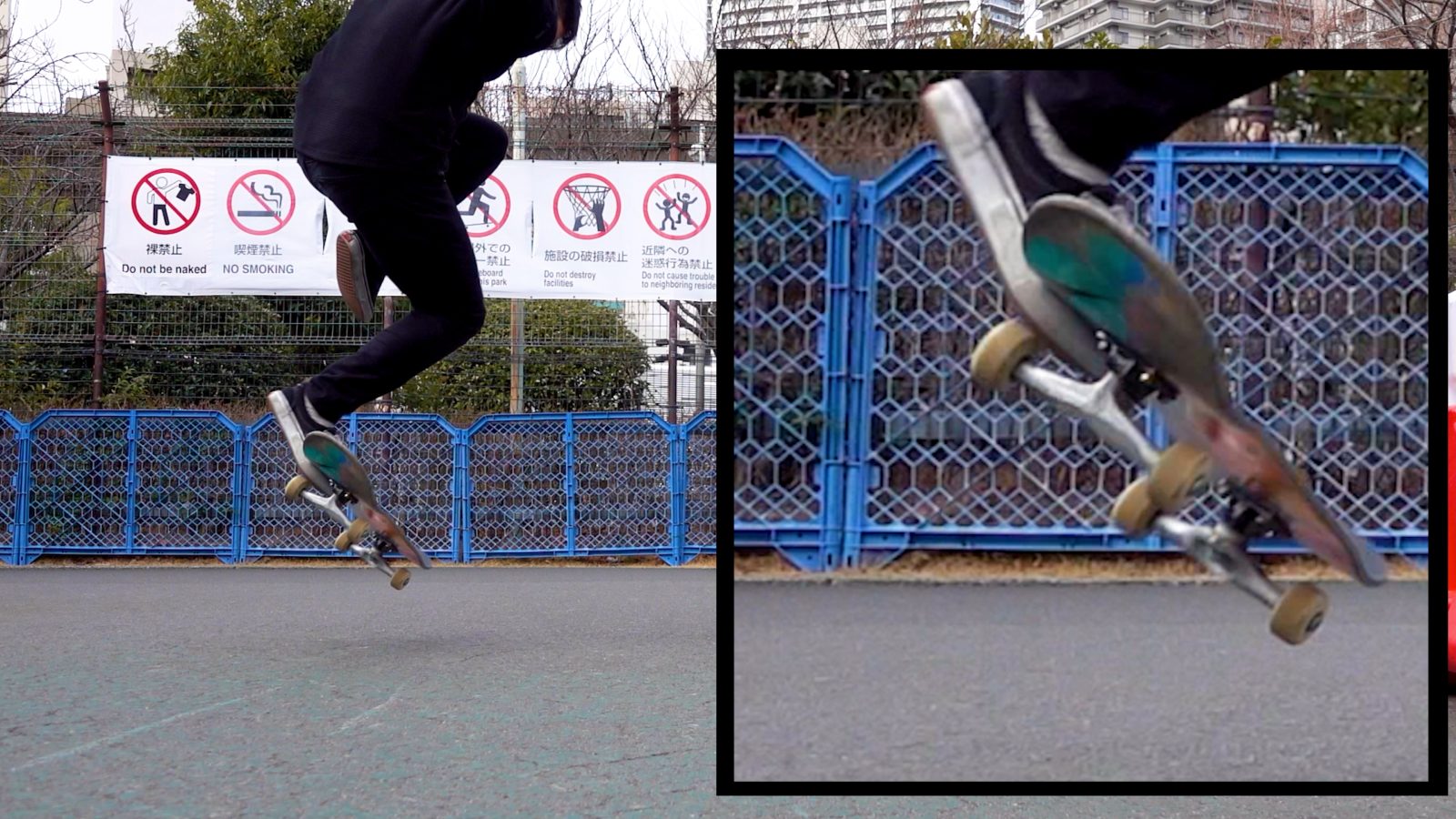
Analysis
Axis of rotation
The key concept of this trick is in the axis of rotation. There are two types of axes in this 3D world we live in: the global axis and the local axis.
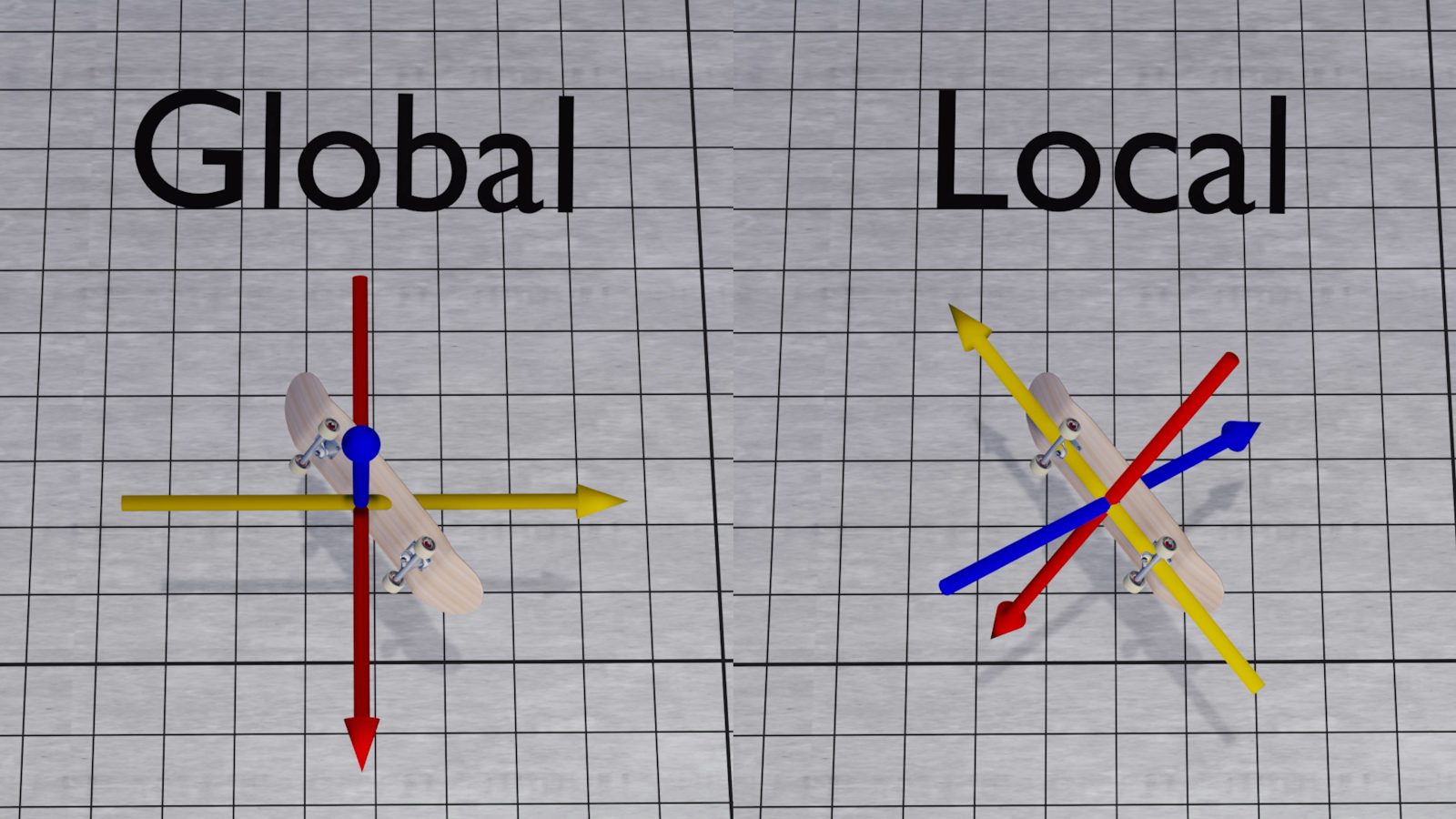
The Global Axis
The global axis is the axis that this space has, and it applies equally to all objects. In this example, we'll call the axis that connects the toe-side and the heel-side in red the X-Axis, the axis parallel to the direction of travel in yellow the Y-Axis, and the vertical axis in blue the Z-Axis. The most obvious example is gravity. All objects are equally subjected to gravity and are pulled downward along the global Z-axis.

The Local Axis
On the other hand, the local axis is the axis that each object has. Popping changes the angle of the board, but the concept of the local and global axis continues to apply.
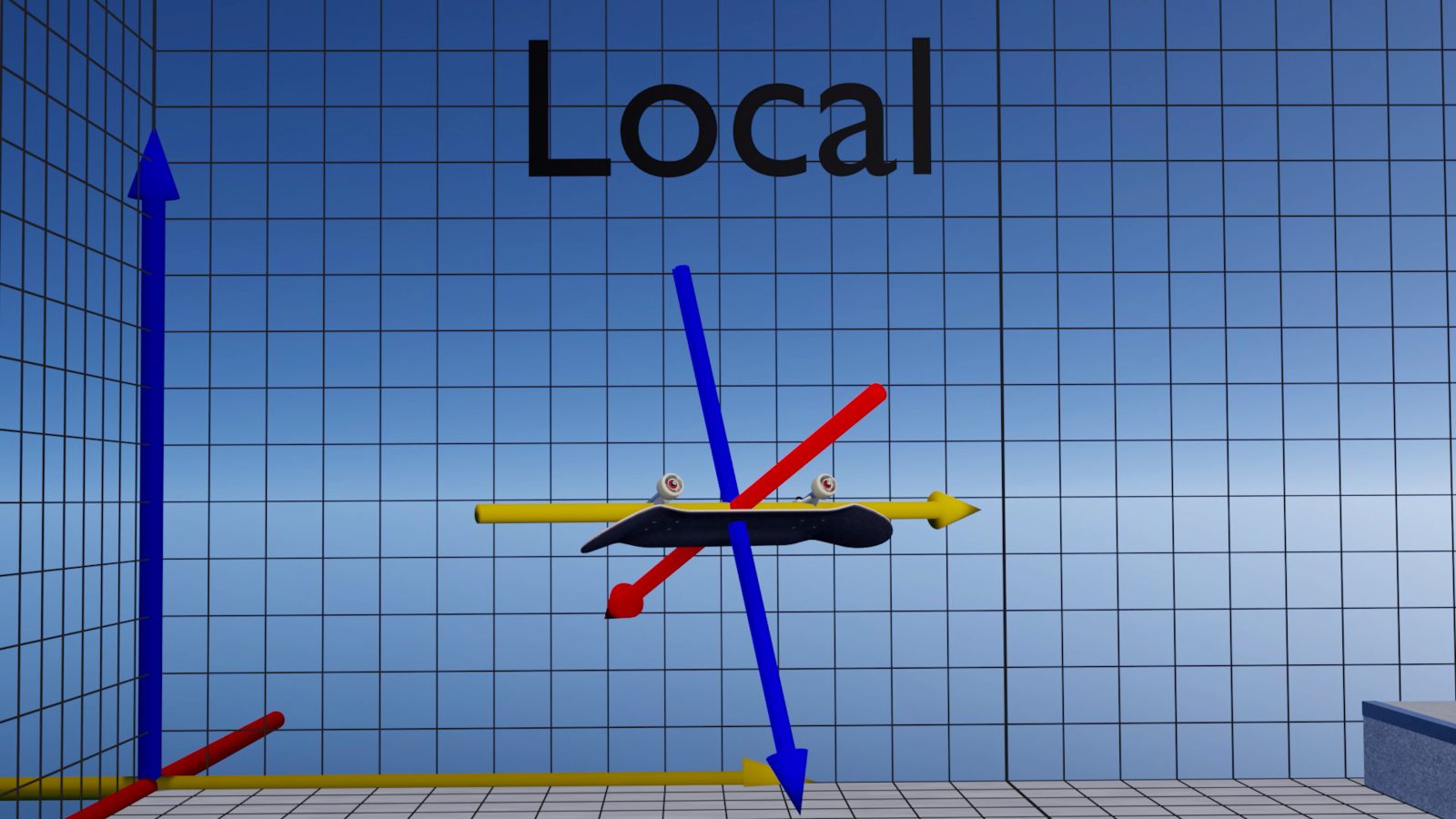
Board's behavior
The direction of the board's ascent is along the global Z-axis, and the direction of the rotation around the local Z-axis.
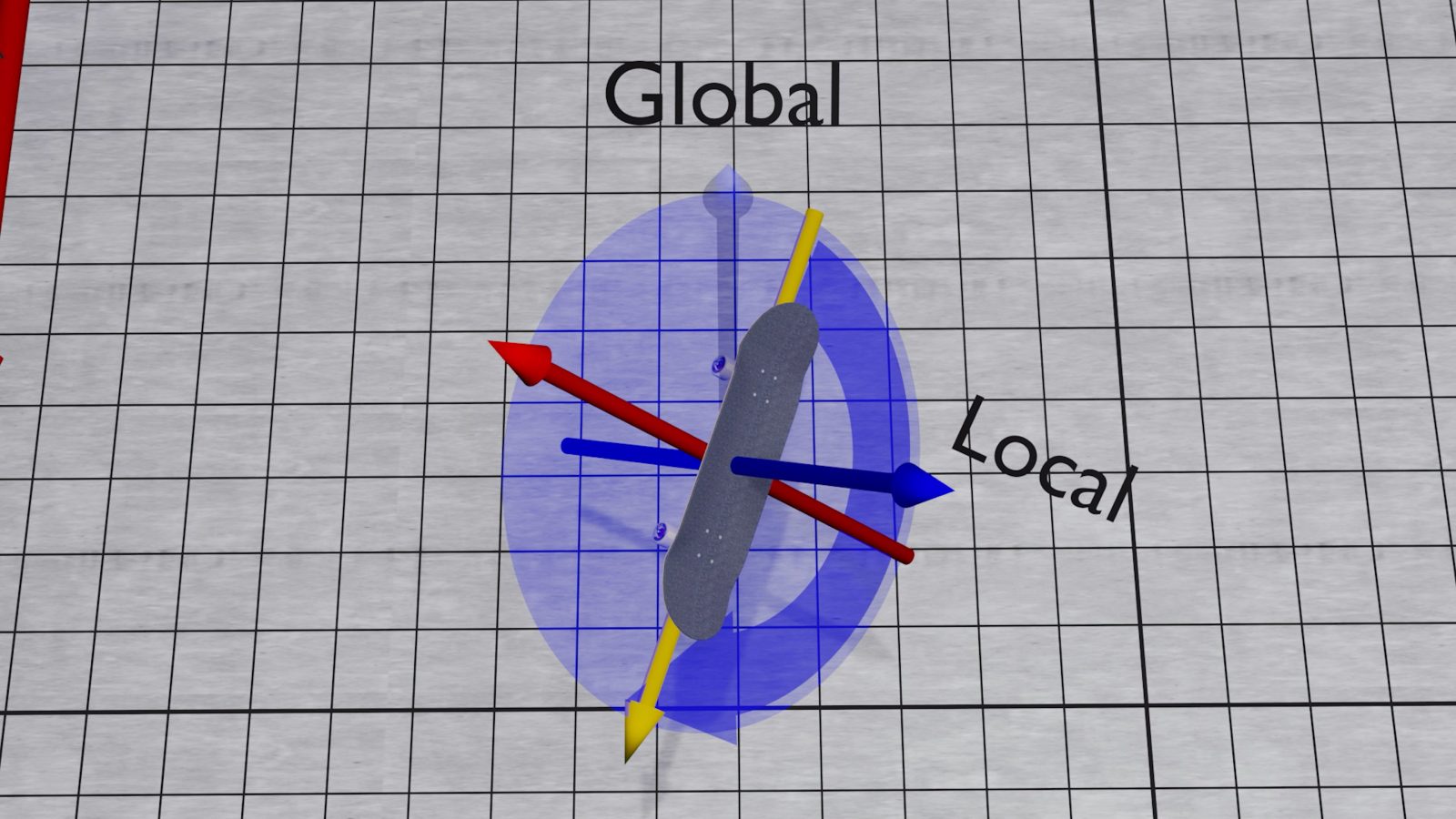
How to flip the board
In order to flip the board, apply a vertical force to the local XY-axis plane. Flick the back side of the board with your toe, and the board flips in the kickflip direction around the local Y axis.
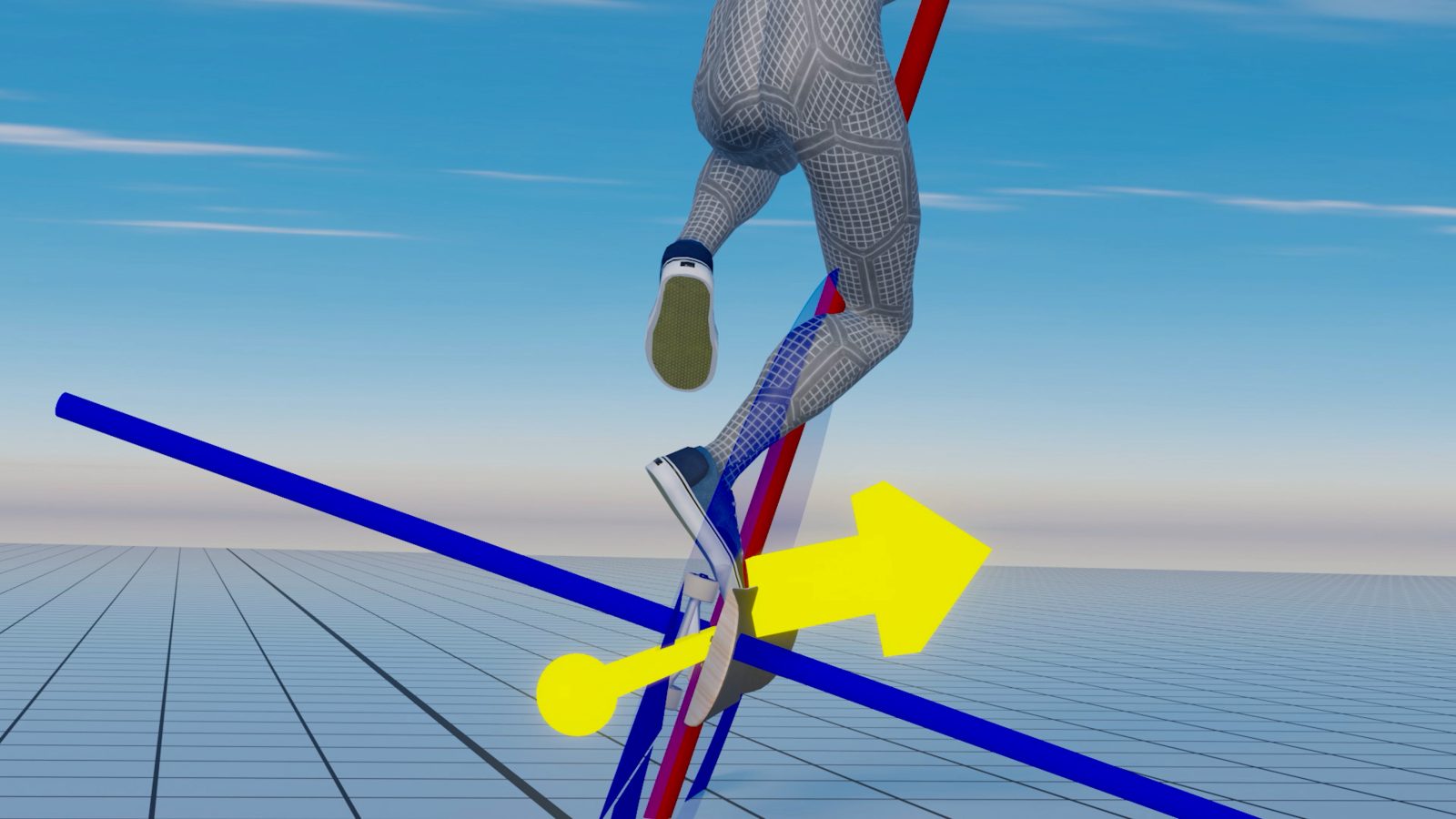
Common Mistakes
Common Mistake #1 Pushing the Y-Axis
Not surprisingly, this flick is the hardest part. If the part of the toe that hits the board is too big, you will push the Y-axis, pushing the entire board away from you instead of flipping it.
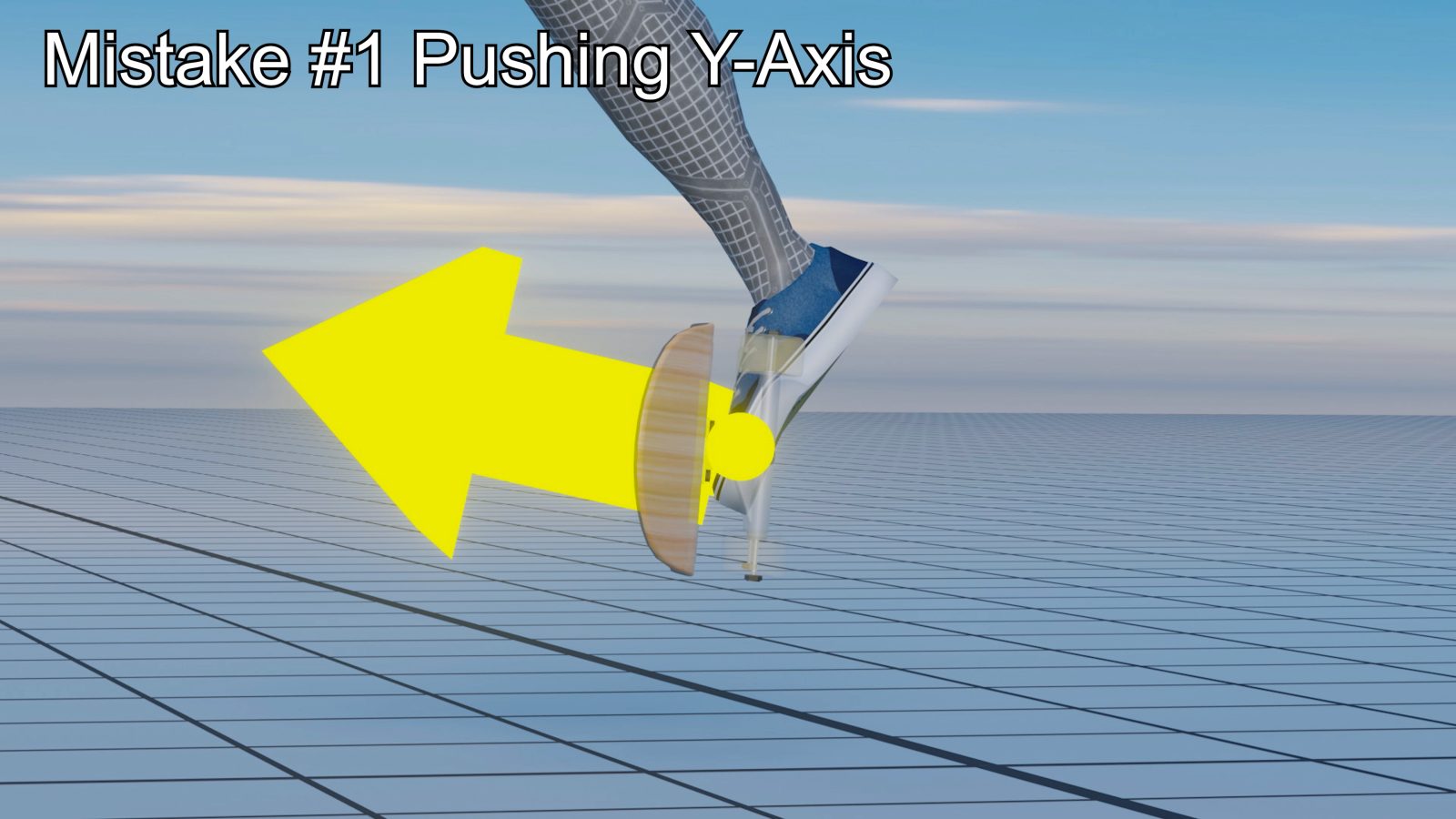
Common Mistake #2 Flicking too weak
On the contrary, if the part of the toe that hits the board is too small, the board doesn't flip fast enough, and you will land either primo or on the board upside-down.
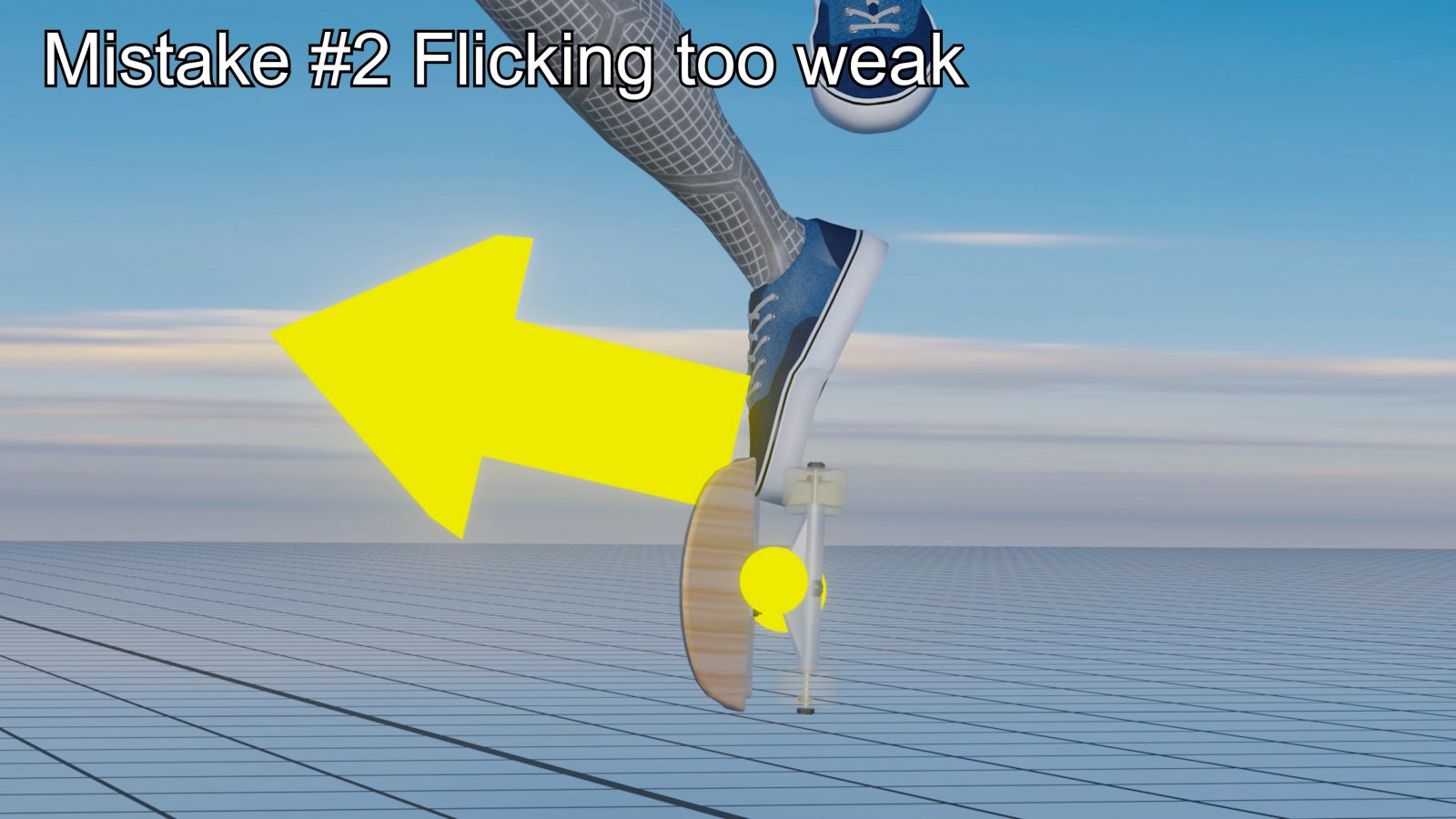
Common Mistake #3 Lifting back foot too early
Similarly, if you lift your back foot too early, it won't be able to hit the board, and you'll wind up doing a failed version of Treflip.

Common Mistake #4 Lifting back foot too high
Even if you time it right, if the angle at which you lift your back foot is too big, the board lifts too high and hits your feet, and the flip stops.
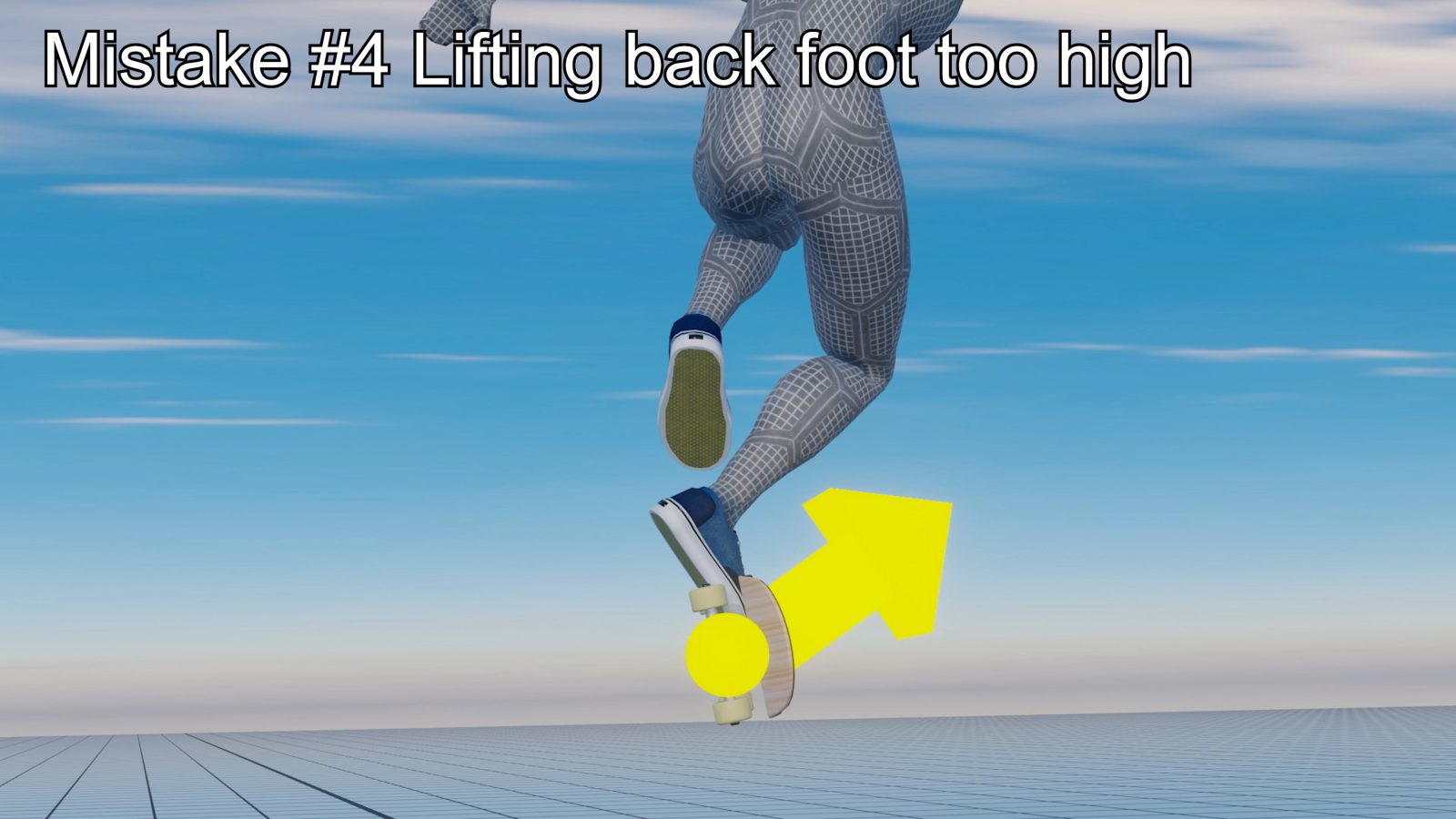
Amount of necessary force to flip the board
To control the rotation, it is essential to stay relaxed and move the back foot with the minimum force necessary. You may think you'd need a lot of force to flip the board twice, but in reality, not much force is needed. As evidence, you should be able to flip your board with very little force when you try it while standing on the ground.
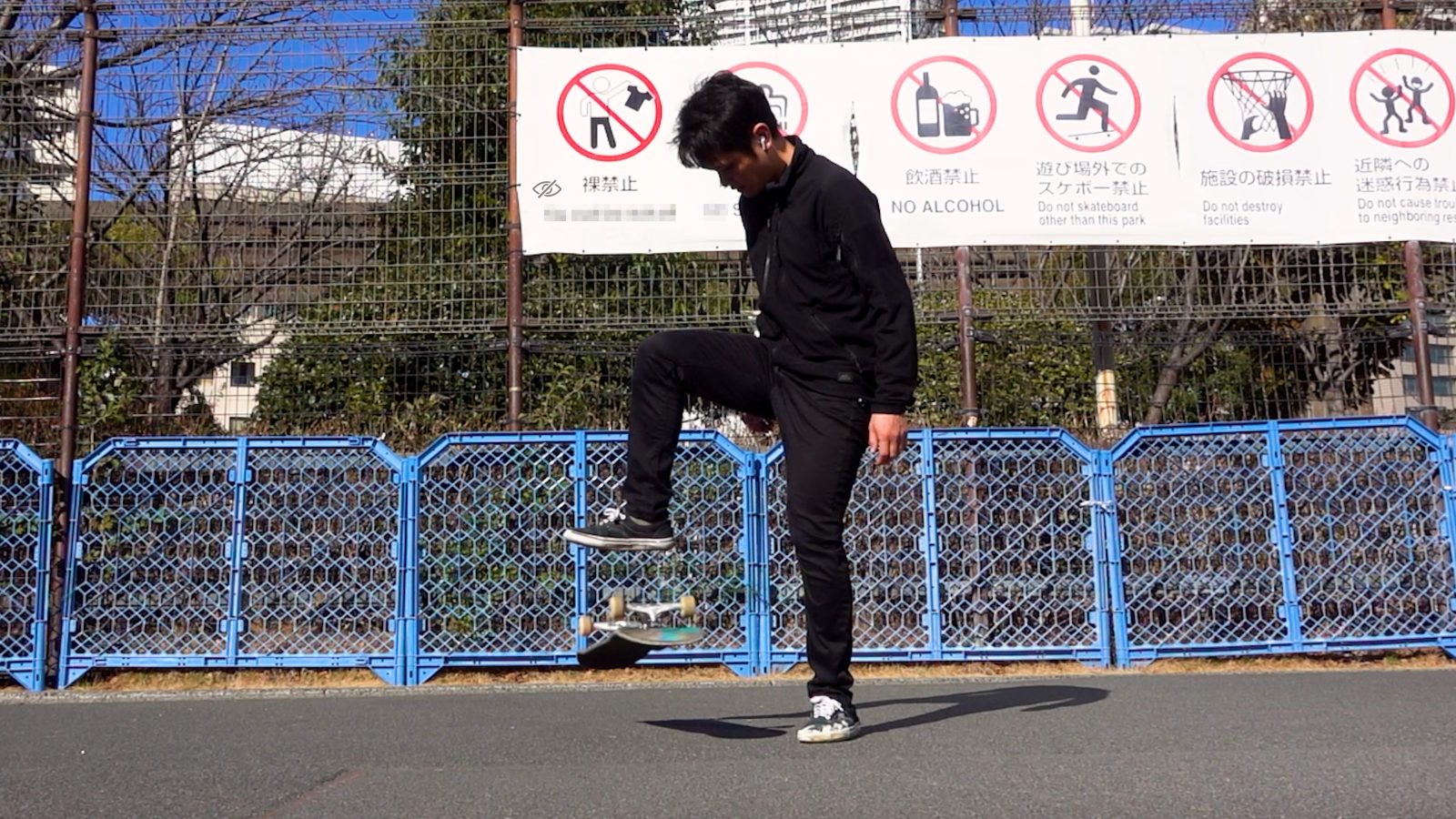
How to lift the back foot efficiently
There's a way to lift your back foot effectively. By lowering your upper body after getting into the air, the opposite side of the body (i.e., the toes) will lift in reaction. Use this concept and adjust how far you should lower your upper body so the back toe can exert a perpendicular force to the local XY plane.
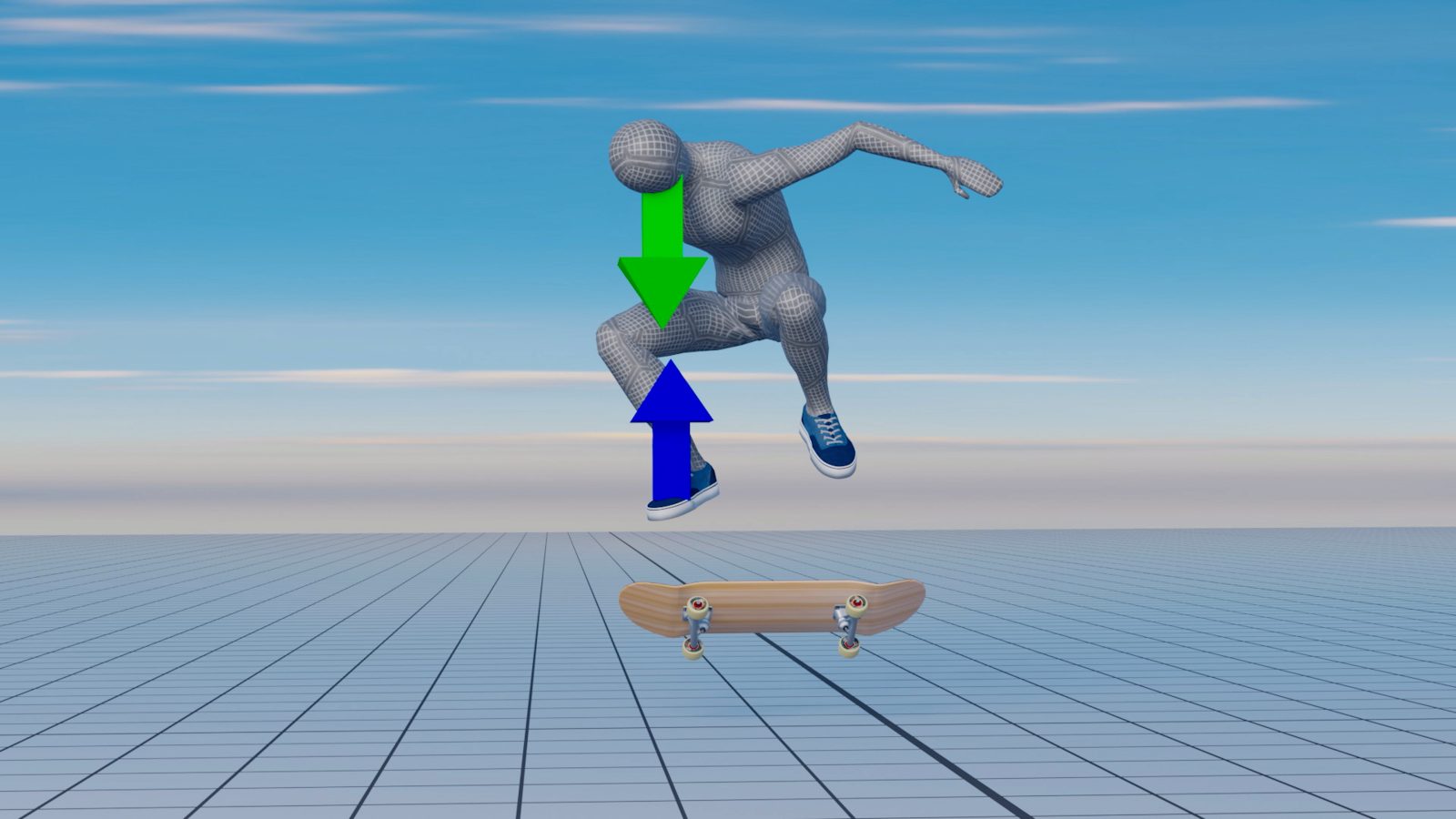
Importance of keeping the body closed
Body orientation is also important. If it's open, your back foot tends to go against the rotation of the local Z-Axis. So make sure to close your body and wait for the board to rotate 180 degrees before flicking it.

